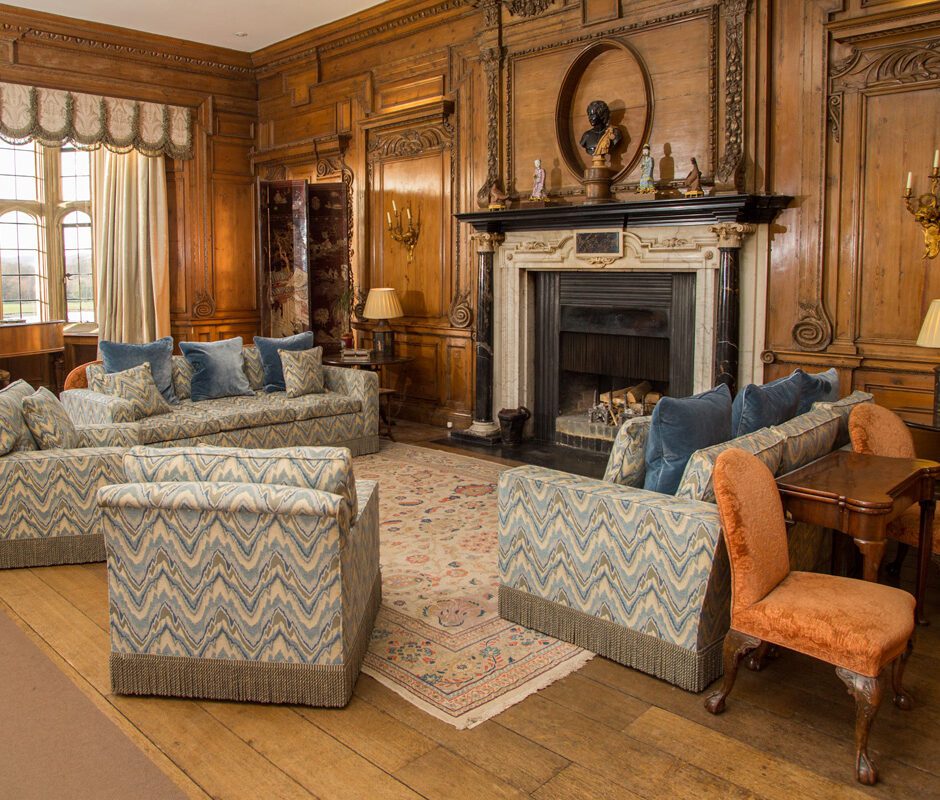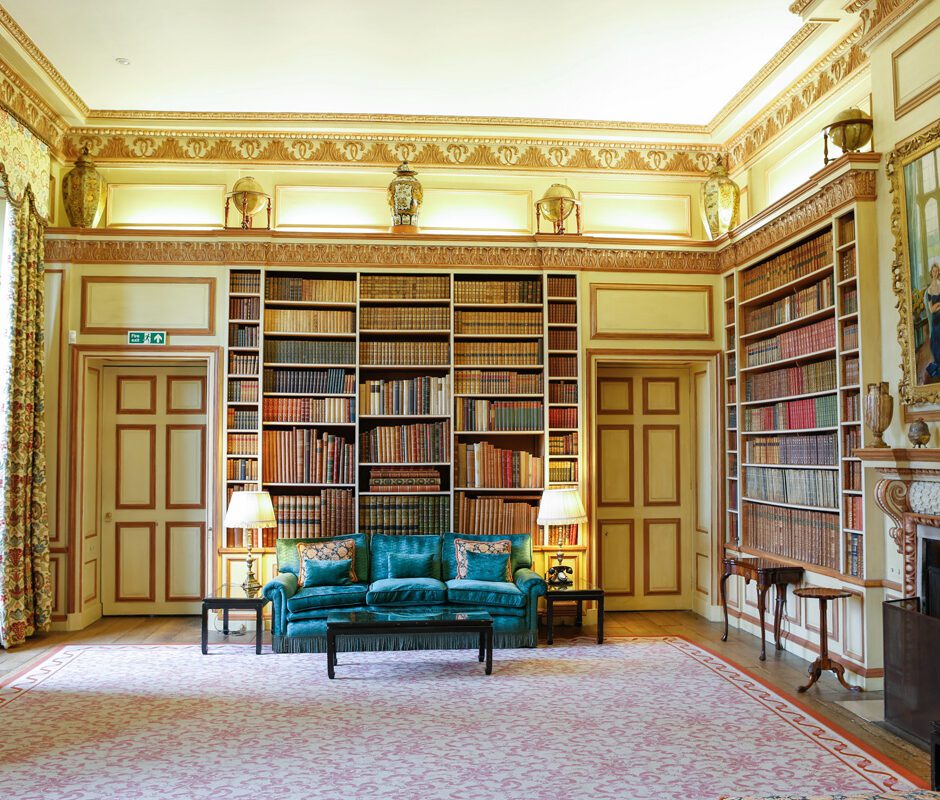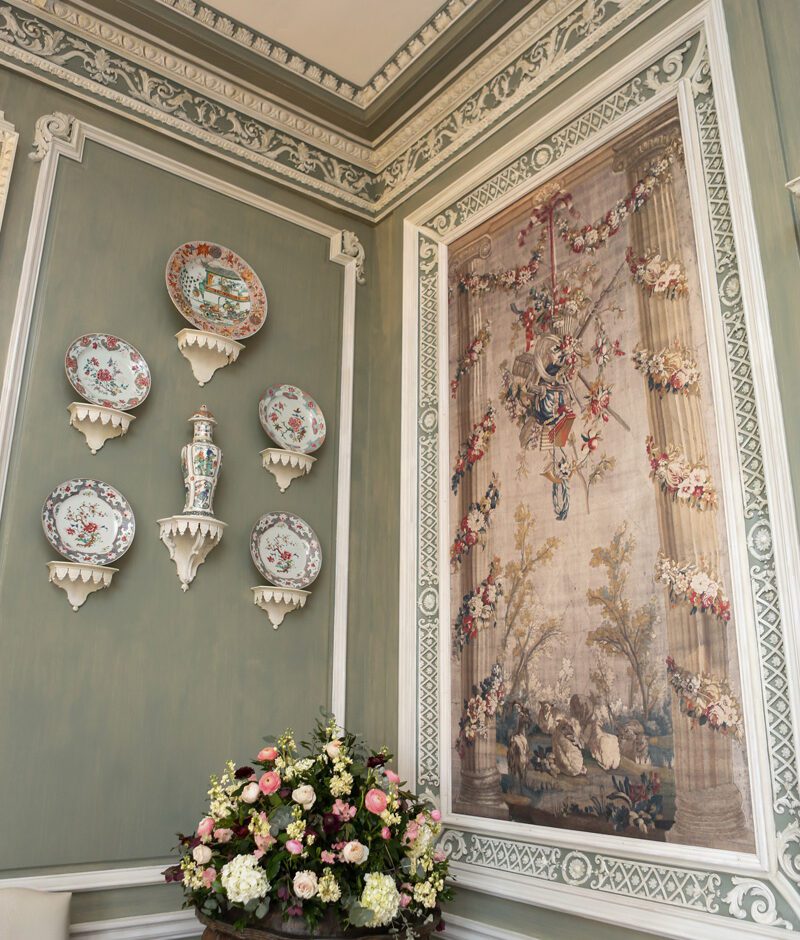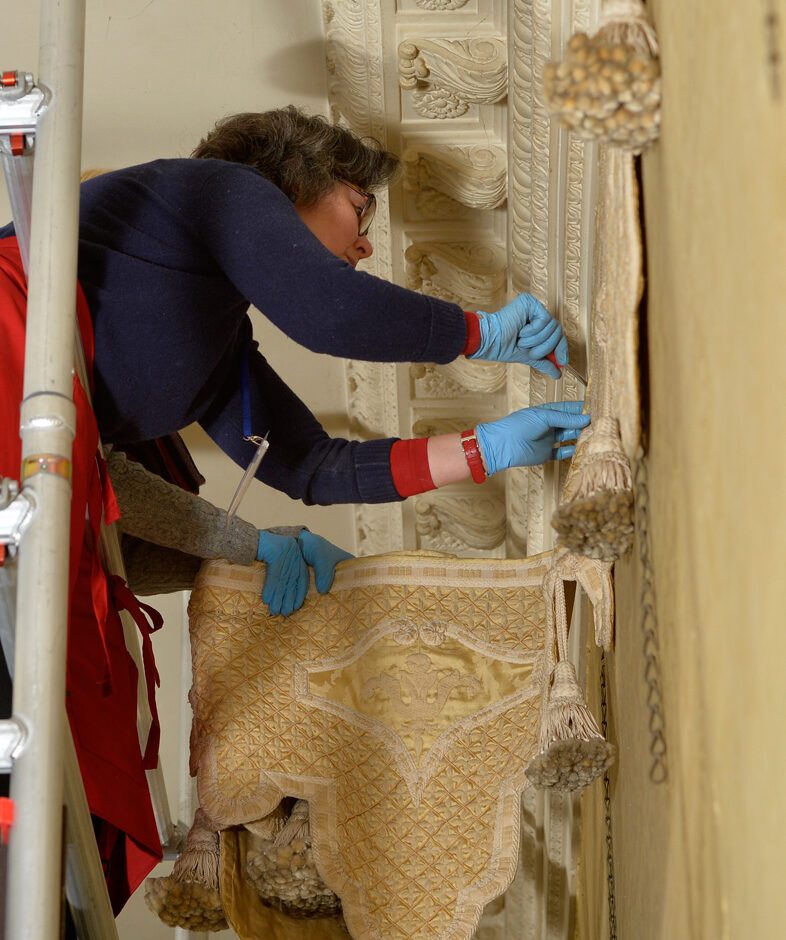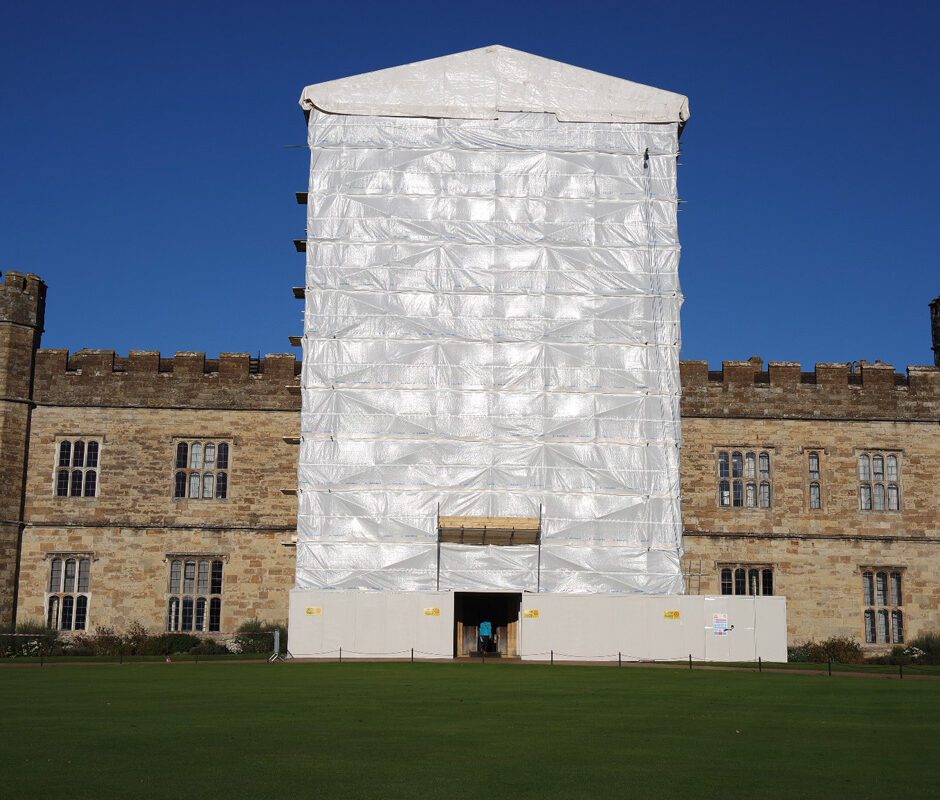After twelve months of comprehensive research, work began on a large-scale conservation project in the private suite of Lady Baillie, comprising the master bedroom and dressing room. The unique bathroom, which has walls lined with Russian onyx, was conserved previously in anticipation of the current scheme of restoration.
Lady Baillie’s ‘blue bedroom’, as it is known, is now considered to be one of the rarest and finest surviving examples of a Stéphane Boudin (1888-1967) interior scheme from the 1930s, anywhere in the world. Other examples of his work can be found at the White House in Washington DC, and at the Paris apartments of the Duke and Duchess of Windsor, but Leeds Castle is the only location where the public can see the stunning designs up close and personal.
Boudin was described as “the greatest designer in the world”, creating stunning 20th-century interiors which drew inspiration from preceding centuries and different countries. He met Lady Baillie in 1933 and their client-designer relationship spanned more than three decades, ending when he died in 1967. The blue bedroom was the first of several important commissions Boudin undertook at Leeds Castle and the 1930s interiors visitors see today are crucial to understanding this great designer’s creativity and artistic practices.
Lady Baillie and Boudin began working on Leeds Castle in 1935 and together they created her dream of a Castle which would become a playground for the rich and famous, entertaining the likes of the Prince of Wales and Wallis Simpson, Noel Coward and Ian Fleming. The blue bedroom, which has remained largely untouched for the last 80 years, had in more recent years begun to show visible signs of light and other environmental damage. The 18th-century style wood panelling and the parquet floors, as well as items of furniture and textiles from Lady Baillie’s collection, all required urgent attention from conservation specialists to prevent any further decline in condition.
COVID-safe work to sympathetically restore and conserve both the bedroom and the adjoining dressing room took place behind the closed doors of the Castle during the lockdowns caused by the pandemic.
Leeds Castle Deputy Curator, Catherine Pell said:
“This ambitious restoration project has involved carrying out paint analysis to determine original paint colours and techniques, conserving pieces of furniture integral to the overall decorative scheme and removing later obtrusive fixtures. The specialist conservation of the interiors and collections means they will be preserved for future generations. As a consequence of these preventive conservation measures, they will enjoy a longevity they wouldn’t otherwise have had.”







































